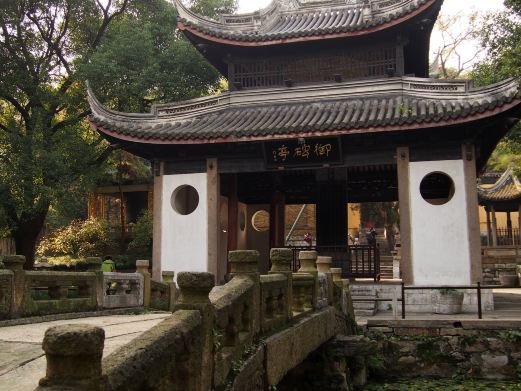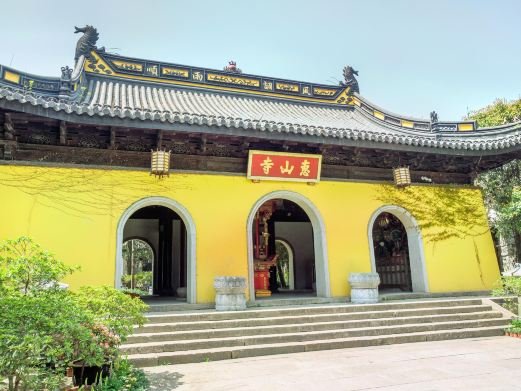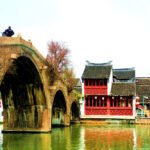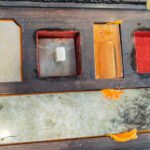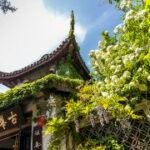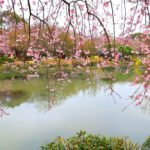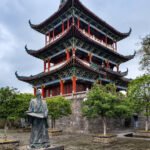Huishan Temple is a scenic spot located within Xihui Park in Wuxi. The park is situated at the foot of Huishan to the west and includes Xi Mountain’s leisure area to the east. Huishan Temple belongs to the historical area and is located in the northern part of this region. The temple was originally built during the Southern and Northern Dynasties and has been destroyed and rebuilt through the ages, leaving behind relics from various dynasties. The famous Tang Dynasty poet Li Shen once wrote the well-known poem ‘Sympathy for Farmers’ here, with the line ‘Hoeing in the midday sun, sweat drips down to the soil’ being a household phrase. Visitors come to Huishan Temple to explore historical sites and to pray for blessings.
The main structures of Huishan Temple are arranged along an east-west central axis. A mountain gate opens to the east, known as the Ancient Huashan Gate. Behind the gate, two stone sutra pillars stand, one from the Tang Dynasty and the other from the Song Dynasty. Further ahead is a two-story pavilion-like second mountain gate, the Vajra Hall, with the first floor bearing the plaque ‘Huishan Temple’ and the second floor bearing ‘The First Mountain of the South of the Yangtze River’. Inside the hall, the哼哈二将 are enshrined.
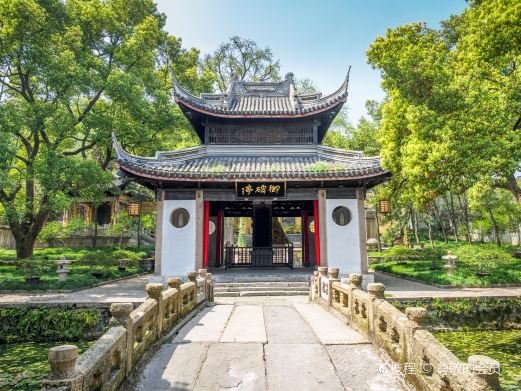
Proceeding forward, one encounters the Hall of the Heavenly Kings with three archways, where the Four Great Vajra Kings are worshipped. Passing through the Hall of the Heavenly Kings, one arrives at the essence of the temple. In a courtyard, the ancient Wuxi stone bridge from the Song Dynasty, the Golden Lotus Bridge, lies before you, with beautiful patterns engraved on both sides. In summer, the golden lotus flowers blooming beneath the bridge are particularly enchanting. For cultural relic protection, the bridge is not accessible to pedestrians. Opposite the bridge is the Qianlong Imperial Stele Pavilion. Circumnavigating the bridge to the center of the courtyard, one finds the Ming Hongwu ginkgo tree with its towering branches, making autumn a great time to visit and admire the golden leaves that cover the ground. Under the ginkgo tree is the Tang Dynasty Listening to Pines Stone Bed, on which the Tang Dynasty calligrapher Li Yangbing inscribed the characters ‘Listening to Pines’ in seal script.
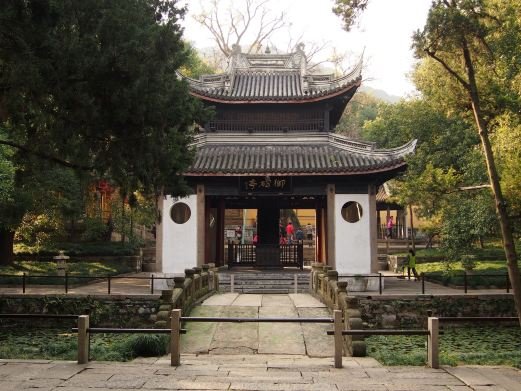
On one side of the courtyard, there is a newly built bell pavilion with a replica of a Tang Dynasty bronze bell. Behind the courtyard, the Datong Hall is visible only by its gate, and passing through it leads to the main hall, the Mahavira Hall, where Sakyamuni, Manjushri, and Samantabhadra are enshrined. Buildings not on the temple’s central axis include the Great Compassion Pavilion, housing the Thousand-Armed Avalokitesvara, and the Sutra Tower (Fragrant Leaves Scattering). Standing in the Great Compassion Pavilion and looking eastward, one can see one of Wuxi’s landmarks on Xi Mountain, the Longguang Pagoda. Heading south from Huishan Temple leads to the Second Spring under Heaven, and the Golden Lotus Bridge to the north connects to the Jichang Garden. Every year on December 31st, Huishan Temple holds a bell-ringing event to welcome the New Year, and Dharma assemblies are also held on the birthdays of various Buddhas and important Buddhist festivals. The temple is open all year round from 08:00 to 17:00, with specific business status subject to the day’s opening conditions.
